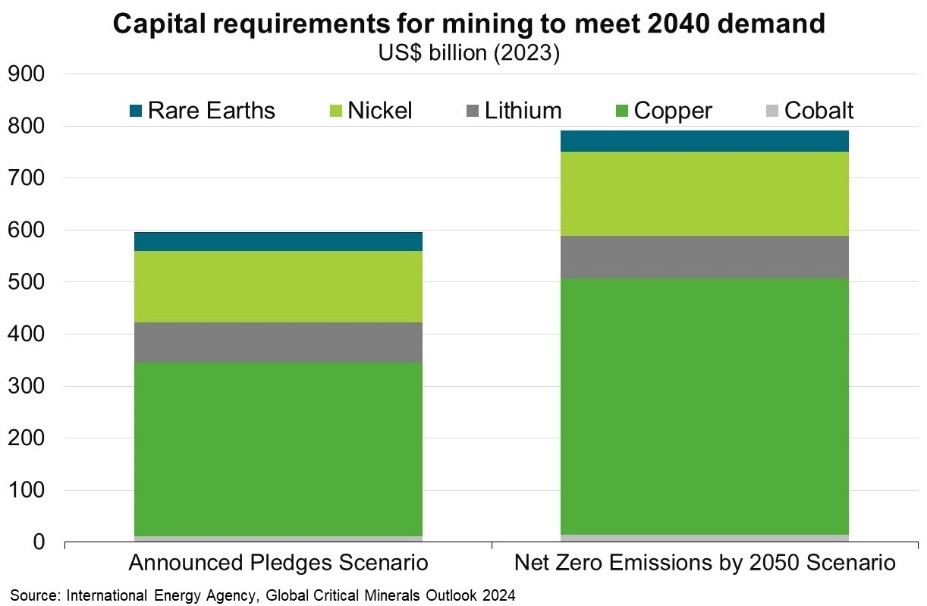Australia — Critical minerals need more investment to meet climate goals
As key inputs to energy transition, military technologies and consumer electronics, demand for critical minerals is expected to grow substantially. For instance, global electric vehicle (EV) sales could top 17 million in 2024, accounting for more than one in five cars sold worldwide, according to the International Energy Agency (IEA), up from 14 million in 2023. Growing EV demand is helping boost Australian exports of clean energy metals and minerals, such as copper, nickel and lithium.
However, forecasts indicate a supply deficit for critical minerals could emerge from 2028. The UN has identified 110 new critical minerals mining projects worldwide, well short of the 80 new copper mines and 170 new lithium, nickel and cobalt mines needed. Current low prices for many minerals exacerbates the supply challenge, as the mining industry responds by delaying projects, scaling back or suspending operations. The IEA estimates US$800 billion of new investment in critical minerals mining is needed by 2040 to meet global net zero emissions targets (Chart), equivalent to the size of Switzerland’s economy.
To capitalise on Australia’s abundant critical minerals reserves and growing demand, the Australian government is increasing support for investment in critical minerals projects, including through the 2024-25 Budget and the broader Critical Minerals Strategy 2023–2030. Enhanced access to government funding and higher tax credits aim to induce mining companies to produce and process more critical minerals and batteries domestically. The Biden administration’s recent move to raise US tariffs on Chinese goods, including critical minerals, could further encourage the development of processing capacity outside of China (which accounts for about 60% of worldwide critical minerals production and 85% of processing capacity). More global processing could open up new markets for Australian exporters (about 90% of Australia’s extracted critical minerals are shipped to China).

